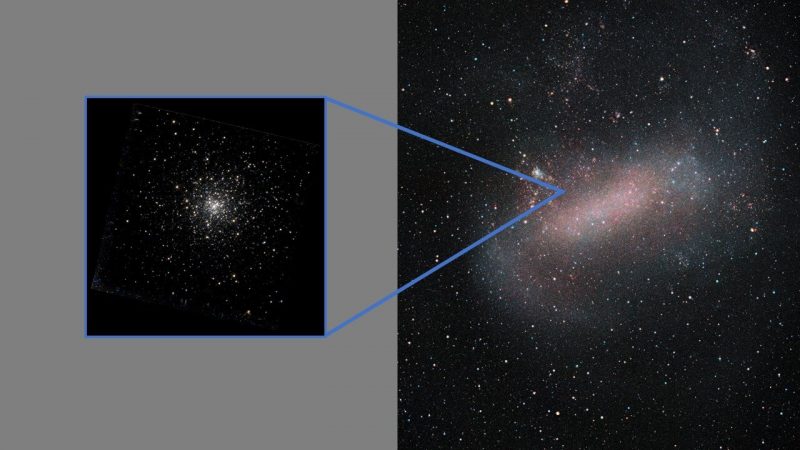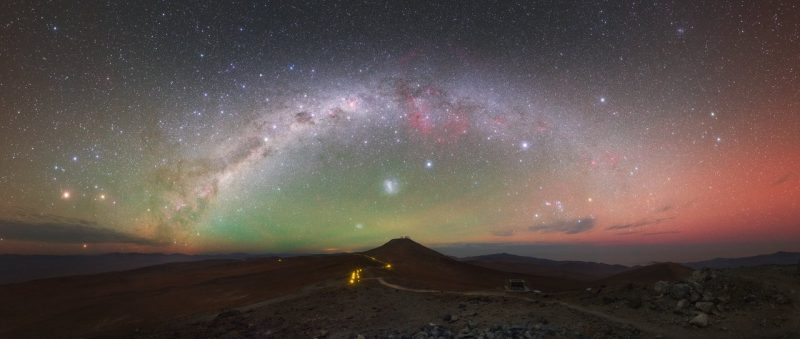
Small galaxy eats smaller galaxy
Scientists believe they have evidence that the Large Magellanic Cloud, a dwarf satellite galaxy of our larger Milky Way galaxy, ate an even smaller galaxy in the distant past. A team of Italian-Dutch researchers examined globular clusters – ancient spherical groupings of stars found in halos around galaxies – of the Large Magellanic Cloud. It found one of those globular clusters – NGC 2005 – had a different chemical composition than the others. They believe this cluster is the remains of a smaller galaxy that the Large Magellanic Cloud absorbed.
The scientists published their paper October 18, 2021, in the peer-reviewed journal Nature Astronomy.
Testing a theory of galaxy formation
Astronomers believe that galaxies grow through small building blocks until they become the large island universes we see. They have past evidence that the Milky Way grew in just such a way. The Gaia satellite showed that the Milky Way formed through the mergers of smaller galaxies. But the astronomers wanted to see if there was evidence that the same held true for the creation of galaxies smaller than the Milky Way. As the scientists said in the paper:
The best chance we have to test this prediction is by looking at the most massive satellite of the Milky Way: the Large Magellanic Cloud.
Targeting globular clusters
Globular clusters are accumulations of thousands to millions of stars. The gravity of the globular cluster can hold them together over eons, despite the outside influences of a larger galaxy’s gravity. The researchers studied 11 globular clusters in the Large Magellanic Cloud. One of these, NGC 2005, had a distinctly different composition than the others and became their target object.
NGC 2005 consists of about 200,000 stars and lies 750 light-years away from the center of its galaxy, the Large Magellanic Cloud. Using the Very Large Telescope and the Magellan telescopes in Chile, the researchers discovered that NGC 2005 has less zinc, copper, silicon and calcium than the ten other clusters.

Chemical composition reveals a different origin
NGC 2005 lacks some of the heavier elements of the other globular clusters of the Large Magellanic Cloud. The scientists deduced that the cluster must be a relic of a smaller galaxy.
This smaller galaxy’s stars formed slowly. Billions of years ago, they believe the smaller galaxy merged with the fledgling Large Magellanic Cloud. Eventually, the majority of the small galaxy dissolved into the Large Magellanic Cloud. Yet the gravitationally bound globular cluster NGC 2005 remained. Co-author Davide Massari of the University of Groningen said:
We are actually seeing a relic of an earlier merger. And we have now convincingly demonstrated for the first time that small galaxies neighboring our Milky Way have in turn built up from even smaller galaxies.
Bottom line: Scientists found evidence that a small galaxy – the Large Magellanic Cloud, a satellite of the Milky Way – has eaten an even smaller galaxy.
Source: A relic from a past merger event in the Large Magellanic Cloud
The post Small galaxy consumes an even smaller galaxy first appeared on EarthSky.
0 Commentaires